Results of the UK’s Largest Mobile Network Survey for the River Severn Region

Network analyst firm Streetwave has today published its results from the UK’s “largest mobile coverage survey“, which used bin lorries to test the 4G/5G (mobile broadband) network coverage and speed of each mobile operator across the River Severn Partnership Advanced Wireless Innovation Region (RSPAWIR) – reflecting 33 councils in Wales and England’s West Midlands.
The company has already spent the past few years harnessing waste (bin / refuse) collection trucks to map mobile network performance across various parts of the UK (e.g. here, here, here, here and here). In this setup, rubbish collection trucks are installed with several off-the-shelf Smartphones using special software, which run continuous network tests (once every 20 metres in rural areas and 5m in urban areas) as the vehicles go around their routes.
The data this creates is usually considered to be more detailed and accurate than the estimates of mobile network coverage that are so often produced by mobile operators and Ofcom, which is because bin lorries need to go down almost every single road in order to conduct their collections and do so on a regular basis. Suffice to say that this makes them a uniquely useful and cost-effective resource for conducting this sort of study.
Advertisement
The data they collect is then used by local authorities to help identify areas that may require additional intervention in order to improve local mobile coverage and or network capacity. In addition, members of the public also gain access to some of this data via address-based coverage checkers and interactive maps (example).
The Results
The data was collected from across some 31,780km of road network within 33 councils in the west of England and eastern Wales, with the results for each area being summarised below using Streetwave’s definition of ‘Essential Coverage‘ – reflecting locations where the network provides users with speeds of above 1Mbps download, 0.5Mbps upload, and below 100ms (milliseconds) of latency (i.e. covering or allowing only the most basic of use cases / needs).
Overall EE was found to have delivered the highest ‘Essential Coverage’ – covering 80% of the region and pushing the fastest mobile broadband speeds (average download of 18.4Mbps and uploads of 5Mbps), while O2 produced the lowest result – covering 48% of the region. Vodafone ranked second with a 69% score for Essential Coverage, while Three UK came next on 50%.
However, it was noted that Essential Coverage falls as low as 35–40% in several councils, underlining the digital divide faced by many rural communities. Sadly, Streetwave’s summary didn’t include any scores for stronger types of coverage with faster speeds, but residents can access this and more data by using the digital coverage and performance checker (remember to zoom-in for the most detail or use your address).
Advertisement
Residents can access the coverage checker here:
https://app.streetwave.co/coverage-checker/river-severn-partnership
Otherwise, the ‘Essential Coverage’ results for each primary council in the region can be found below.
Entire River Severn Region
EE – 80%
Vodafone – 69%
Three – 50%
O2 – 48%
Herefordshire
EE – 74%
Vodafone – 74%
Three – 59%
O2 – 57%
Worcestershire
EE – 86%
Vodafone – 75%
Three – 57%
O2 – 46%
Warwickshire
EE – 90%
Vodafone – 72%
O2 – 57%
Three – 55%
Shropshire
EE – 72%
Vodafone – 72%
O2 – 50%
Three – 48%
Powys
EE – 60%
Vodafone – 56%
O2 – 46%
Three – 35%
Staffordshire
EE – 87%
Vodafone – 74%
Three – 57%
O2 – 50%
Gloucestershire
EE – 89%
Vodafone – 71%
Three – 63%
O2 – 54%
Monmouthshire
EE – 65%
Vodafone – 60%
Three – 45%
O2 – 39%
Telford & Wrekin
EE – 74%
Vodafone – 67%
Three – 58%
O2 – 51%
One catch above is the recently approved merger between Vodafone and Three UK (VodafoneThree), which over the next few years will change the results as both networks are slowly brought closer together. Not to mention the planned coverage and performance improvements under that agreement.
The survey was also tasked with studying the coverage of Long Range Wide Area Networks (LoRaWAN), which harness a small slice of lower frequency radio spectrum (e.g. bands like 868MHz and 915MHz) to support relatively slow and low power data links. Such networks are often used to support Internet of Things (IoT) style sensors (water meters etc.), although the results of this side will be less relevant to the public and weren’t included.
Mark is a professional technology writer, IT consultant and computer engineer from Dorset (England), he also founded ISPreview in 1999 and enjoys analysing the latest telecoms and broadband developments. Find me on X (Twitter), Mastodon, Facebook, BlueSky, Threads.net and Linkedin.





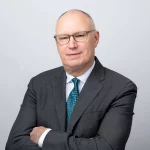
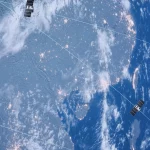
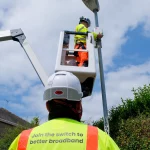




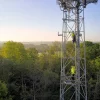
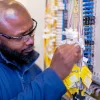

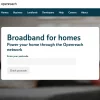





































This finally allows me to somewhat justify that EE is a bit weak around my area and I can’t really touch Three either.
Good to see this is fully published now though.
Just need to cover the rest of the country now.
The residents in Birmingham will not be happy, no Mobile Essential Coverage Check, can’t even get the Bin Men to empty their bins on a regular basis!!!
This further justifies the need for independent operators like wavemobile to cost effectively plug the coverage gaps with a solution that works for ALL operators. I am not surprised that the figures are so low for some networks, just that there is continued resistance to accept that there might be another approach which ticks the environmental (visual and carbon footprint) and cost to deploy.
Our approach is the community funds the installation and backhaul (we generally use local installers so the money stays in the region) and we allow royalty and cost free use of the radios and antennas. If a community has no coverage they can literally ask us for it.
Telford & Wrekin
EE – 74%
Vodafone – 67%
Three – 58%
O2 – 51%
These about right!